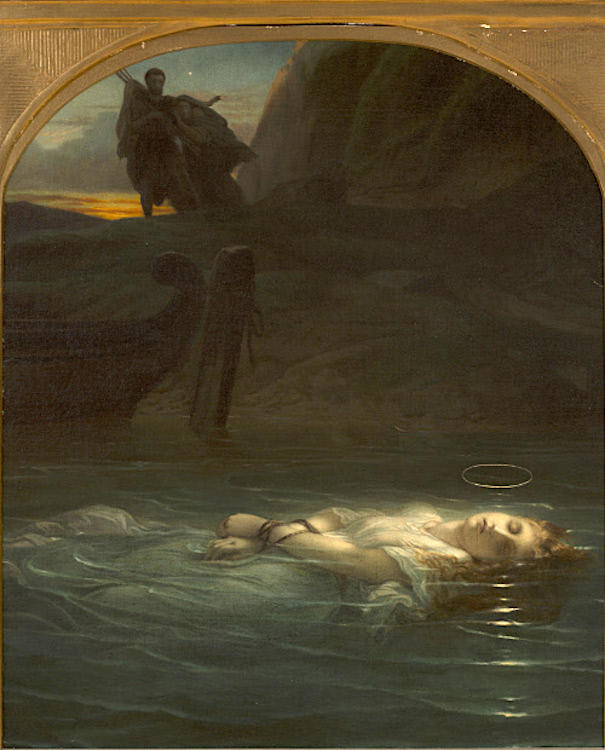
The Christian Martyr, Paul Delaroche (1797-1856). c.1855. Oil on canvas. 21 x 18 in. (53.3 x 45.7 cm); frame: 34 1/2 × 32 in. (87.6 × 81.3 cm). Delaware Art Museum, Delaware, USA. Credit: Samuel and Mary R. Bancroft Memorial, 1935. Object no. 1935-6. Originally featured in Chapter Seven of Barbara T. Gates's Victorian Suicides: Mad Crimes and Sad Histories, a Victorian Web book. Laurent Bury points out that there is an earlier, smaller version of this work in the Hermitage Museum in St Petersburg.
Gates describes Delaroche's subject here as "a drowned woman floating with a life-ring drifting beside her, placed on the canvas like a halo above her head. Above her, too, the heavens are opening." Referring to Millais's celebrated painting a similarly tragic subject, Gates adds, "This popular painting passed into British hands in 1866 and was hailed as the French Ophelia. Ophelia, of course, was also framed with an arched upper edge, suggesting that arcs were a convention for rendering drowned, female suicides in the visual arts" (p.139 in the printed book). The golden arch here, above a glimpsed brighter landscape, helps to relieve the darkness below and add an extra element of spiritual significance — supplementing the light of innocence that seems to emanate from the victim herself. It is as if the heavens, like the two figures looking down at the water, are bearing witness to a miraculous vision. — Jacqueline Banerjee
Links to Related Material
- Laurent Bury's review of Patricia Smyth's Paul Delaroche: Painting and Popular Spectacle (Liverpool: Liverpool Universtiy Press, 2022)
- Barbara T. Gates's Victorian Suicides: Mad Crimes and Sad Histories (a Victorian Web book)
Bibliography
Bury, Laurent. Review of Patricia Smyth's Paul Delaroche: Painting and Popular Spectacle (Liverpool: Liverpool Universtiy Press, 2022)
The Christian Martyr. Delaware Art Museum. Web. 4 March 2024.
Created 4 March 2024